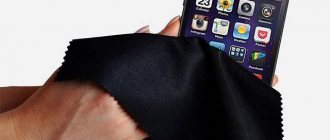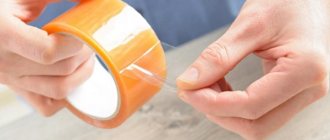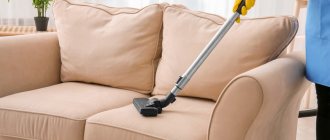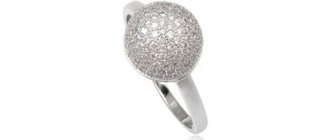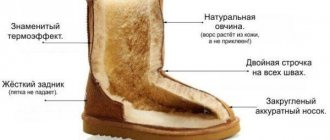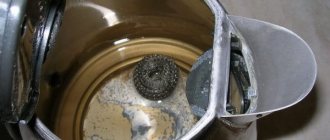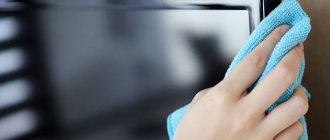What not to do
When wiping off dirt from the screen, you need to adhere to a number of rules. There are several actions that should not be performed as they may cause the device to malfunction.
Use liquid window cleaners
If the display does not have a special protective coating, it is prohibited to treat it with liquid window cleaners and solvents that contain chemical components. When exposed to these substances, the monitor is destroyed.
Clean switched on equipment
When starting cleaning, you need to turn off the TV. In this case, it is not enough just to press the shutdown button on the remote control. To ensure maximum safety when wiping equipment, you should completely turn off the power to the TV by removing the plug from the socket.
Use a fabric with lint
Use a soft, lint-free cloth to remove dirt. One option is microfiber, which is an all-purpose cloth for removing streaks, fingerprints and smudges. Microfiber has the property of absorbing moisture, so to remove large contaminants, it can be pre-moistened.
See also
The best ways and means to clean ceiling tiles at home
Wash with water
If the surface of the screen is not wiped with microfiber, it is prohibited to apply water or liquid products. This will cause a deterioration in the clarity of the transmitted image and the appearance of rainbow stains.
Do not scrape or scratch the surface
When wiping dust and dirt, do not apply force, press on the display or scratch it. Otherwise, noticeable scratches or cracks will remain on the surface.
Particular attention to LED surfaces
Varieties of equipment with an LED surface must be cleaned with extreme care. Even a slight mechanical impact can cause surface destruction.
Turn on until completely dry
Before turning on the device, you should wipe the screen dry or wait until traces of the cleaning agent have dried. This is necessary for safety reasons and to protect the display.
Safety
Unplug technical devices before wiping them. This is a key safety rule. In addition, dust and other contaminants are better visible on a dark screen that is turned off.
It is better to use a soft, lint-free material, then after removing dirt there will be no fibers left on the monitor.
Do not apply water or gels to the surface of the screen, as this will cause streaks. When using an aerosol, care should be taken, since if moisture gets into the housing, the technical device may fail.
When cleaning the screen, you do not need to press on it; movements should be careful. Clean the housing from any dirt. It is recommended to wipe the display every three weeks. Do not turn on the device while it is wet.
To maintain the equipment in working condition, it is worth cleaning the device in a timely manner, while observing safety precautions.
Basic cleaning rules
An important point in cleaning your monitor is choosing the right device. Modern liquid crystal displays can be wiped with several types of fabrics using special products.
Special wet wipes for caring for LCD monitors
Cleaning wet wipes designed specifically for LCD TVs have a number of comparative advantages. Including:
- eliminate static electricity;
- safe to use;
- do not contain abrasive components that damage the screen;
- soaked in cleaning solution.
To clean the display more effectively, it is better to combine dry and wet wipes. Two-level cleaning removes dirt without leaving any traces of moisture.
Lint-free fabric
You can only wipe the LCD TV with a lint-free cloth. Failure to comply with this requirement often leads to malfunctions and equipment damage. The lint-free fabric removes dirt effectively and without consequences.
Microfiber cloths
This type of wipe helps remove accumulated dust, stains, stains and fingerprints. Microfiber is suitable for highly sensitive surfaces, including LCD displays. Using microfiber cloths, there is no need to use additional chemicals. When wiping off large stains, it is enough to moisten the napkin in plain water.
There is also a special spray for treating microfiber. The spray contains an antistatic agent, which reduces the risk of electric shock after turning on the TV. An additional advantage is the formation of a protective layer on the surface.
Why does the LCD screen get dirty?
LCD monitors provide high-quality, rich and realistic images. But during operation they can become dirty for several reasons:
- dust settling during irregular cleaning indoors or from open windows;
- splashes from liquids during cleaning;
- touching the surface.
Stains appear all the time, so users should know how to properly clean the smeared screen of a modern LCD TV.
Special means
The use of special products, which are produced in the form of gel, foam and aerosol, helps to improve the effect of cleaning the screen. The substances remove various contaminants and leave an antistatic effect. When purchasing a cleaning product, you need to make sure that it does not contain alcohol.
See also
How to clean an air conditioner with your own hands at home, the best products
Gel
Gel-like substances are easy to apply and do not leave streaks when wiping the monitor. A small amount of gel is squeezed onto a rag and the entire surface of the TV is treated.
Foam
Foam is suitable for removing difficult-to-remove stains. It is possible to clean the screen using foam without streaks or residues.
Aerosol
Apply the cleaning aerosol directly to the display or onto a cloth and wipe the surface in a circular motion. The aerosol is convenient to use for processing large diagonal screens.
Cotton swab for dirt on joints
Since it is difficult to remove dirt at the joints with a rag or napkin, it is recommended to use a cotton swab. Thanks to the soft base, the stick will remove dirt and leave no marks.
How to clean the case
When cleaning, do not forget to clean the TV case. Dust constantly accumulates on the sides, back and base of the device and fingerprints remain.
Remove dust
It is enough to clean the case from a layer of dust once every 2-3 weeks. You can wipe the device with a soft cloth. If there is serious contamination, special cleaning agents may be used.
When processing the back of the case, you need to be especially careful and not allow substances to penetrate through the holes.
Wash away grease stains
It is easier to wipe off grease stains from the body with special wipes. You can also apply one of the special products designed for cleaning equipment to the fabric.
Traditional methods
A number of traditional methods are not inferior to the use of special substances. Using available means, you can effectively remove dirt from the screen without damaging it.
Vinegar
A safe substance for wiping an LCD monitor is a solution of vinegar with a concentration of 3%. Instructions for use are as follows:
- vinegar essence is mixed with cold water in equal proportions;
- Dip a soft cloth into the solution and wipe the display in a circular motion;
- Wash away any remaining essence with a clean, dry cloth;
- wipe the screen dry.
Soap solution
If you need to remove other contaminants in addition to dust, it is recommended to make a soap solution. Any soap is suitable for this purpose, with the exception of laundry soap. Dissolve the soap in water, moisten a rag in the resulting solution and gently wipe the TV. Then wash off the soap stains and wipe the display dry.
See also
TOP 20 ways to quickly clean a samovar at home
Isopropyl alcohol
Dried particles of dirt and fingerprints can be removed using isopropyl alcohol with a concentration of 70%. The substance is diluted in cold water, maintaining equal proportions, a napkin is soaked in the solution, squeezed out and wiped the screen.
What substances are contraindicated
Some products cannot be used to wipe the LCD screen. They lead to negative consequences and damage equipment.
Acetone
Acetone contains components that harm LCD panels. Exposure to acetone often leads to failure.
Ammonia
The effect of ammonia on the display is similar to acetone. Ammonia is a highly active agent and is not suitable for cleaning your TV.
Ethyl chloride
The substance has a characteristic odor and is flammable. The use of ethyl chloride for cleaning is prohibited.
Gasoline or solvents
Gasoline leaves permanent stains on the screen. Gasoline analogues have the same effect.
Dyes
Dyes have a chemical composition. Exposure to the LCD panel leads to the formation of permanent stains.
Abrasive cleaners
Using abrasive cleaners can scratch the display. Also, do not use abrasive sponges.
Alcohol-containing products
Alcohol damages the protective coating on the screen. Subsequently, small cracks appear on the monitor.
Washing powder and soda
Baking soda and powder particles may not completely dissolve in water. In contact with the screen, the products will leave scratches.
Paper napkins and towels
Paper products contain poorly processed wood components. Cleaning the screen in this case leads to defects.
Wet wipes for hands
Wet wipes contain substances that are harmful to the anti-reflective coating. In addition, napkins that are not suitable for the technology leave stains on the monitor.
Removing scratches
The presence of scratches on the screen interferes with the comfortable viewing of TV. There are several ways to remove scratches.
Getting rid of scratches
There is a way to remove scratches from the screen using a soft eraser.
Prepare the scratched area, wipe it with a specialized liquid. Use a lint-free cloth to wipe the area where the monitor is scratched. Then remove scratches from the TV screen with a new eraser. Choose a white, soft product.
The next step is to remove eraser marks with a damp cloth. Finally, use a dry cloth. Small scratches will disappear after this. This method is not suitable for large scratches.
